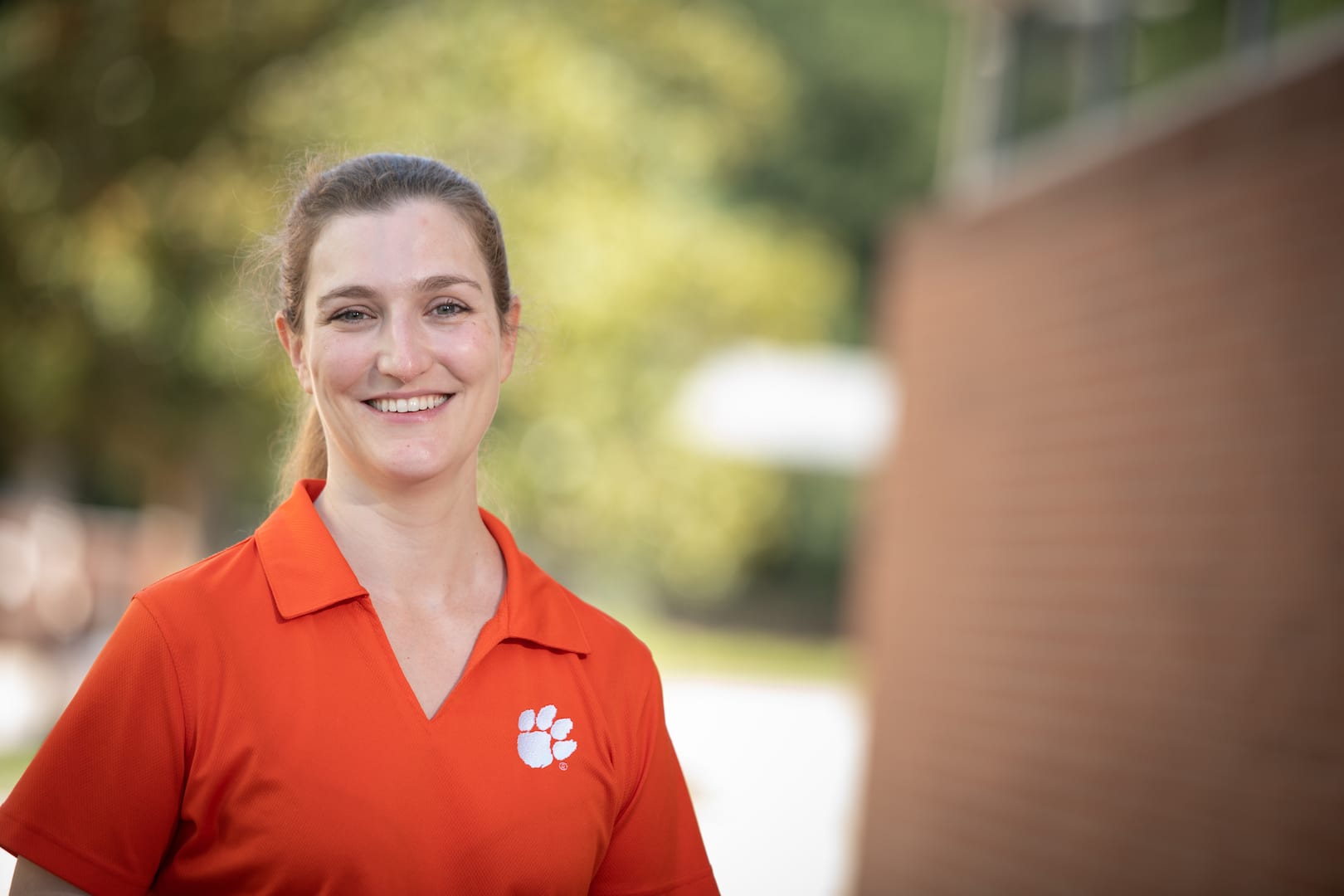The award-winning research that Lizzie Walker did to earn her Ph.D. in bioengineering from Clemson University could be a step toward new ways of diagnosing and treating a painful form of arthritis that makes it hard to open jars, grip tools, or turn a doorknob.
Walker led a team of researchers that found the volar ligament complex (VLC) of the basal thumb joint may be the critical point for understanding osteoarthritis in that joint.
“The big picture is that this research opens the door for better diagnostics and more targeted treatments for thumb arthritis,” Walker said. “By focusing on the volar ligament complex, especially where it attaches to the metacarpal bone, we may be able to catch the disease earlier and treat it more effectively.”
Walker, who completed her Ph.D. this year, served as first author on the paper that reported the team’s findings.
The paper has earned the Athanasiou Student and Postdoc Award, a national honor that is regarded as an indicator of future leadership in biomedical engineering. Walker now works in Tampa as a biomechanics associate at the consulting firm Exponent.
For the study, researchers compared healthy and arthritic basal thumb joints from 24 female cadavers. The team tested the mechanical capabilities of three major ligaments and examined them with high-powered microscopes and other imaging techniques.
Researchers found that while other ligaments stayed intact, the VLC became weaker and began to lose its structural integrity. In advanced arthritis cases, the VLC pulled away from the metacarpal bone and lost the normal transition zone where ligament blends into mineralized bone. That made areas of the VLC near the metacarpal bone more prone to failure than the other ligaments in the joint.
That finding matters because osteoarthritis in the thumb is especially common in postmenopausal women, who undergo surgery for the condition at rates 10 to 15 times higher than men.
Current diagnosis relies mostly on X-rays that show bone changes, often missing early soft-tissue damage.
Walker said the recognition was especially meaningful after years of painstaking work, which began in 2021 and involved extensive dissection, imaging and testing.
“I’m just really thankful the time I put into this paper is being recognized, along with the time my co-authors put in,” Walker said.
At Clemson, she studied under Yongren Wu, a co-author on the paper and an associate professor of bioengineering based at the Clemson–MUSC Bioengineering Program in Charleston.
Co-authors also included Daniel Gordon and Zhaoxu Meng, both of Clemson University; Wu, Shangping Wang, and Hai Yao, all of Clemson University and the Medical University of South Carolina; Alexander Chiaramonti of Wake Forest University School of Medicine; Dane Daley of MUSC; Vincent D. Pellegrini Jr. of Dartmouth-Hitchcock Medical Center; and Elizabeth Slate of Florida State University.
The title of the paper is, “Morphological and Mechanical Property Differences in Trapeziometacarpal Ligaments of Healthy and Osteoarthritic
Female Joints.” It was published in the Annals of Biomedical Engineering.
Delphine Dean, chair of the Department of Bioengineering at Clemson, said the award is a testament to Walker’s talent and dedication.
“This recognition puts Lizzie in outstanding company,” Dean said. “It also highlights the strength of the Clemson-MUSC Bioengineering Program and the impact our researchers are making in advancing musculoskeletal research. I offer my congratulations to Lizzie and the team.”








